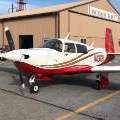Do you have an angle of attack indicator (poll)
Mooney AOA Indicator
92 members have voted
-
Members Online
- McMooney
- Jim F
- MoonMan
- Crawfish
- MarkD34M
- Ventus4
- ElkoRandy20J
- Shawnson
- flyboy0681
- C5Quest
- FlyingDude
- TangoTango
- Officer25
- Max Clark
- PeytonM
- Sabremech
- Marc_B
- EricJ
- Ospeed
- Cruiser73
- tlhoward706
- Aaviationist
- Rmnpilot
- kortopates
- Robm
- exM20K
- toto
- dkkim73
- Rotorhead
- marcusku
- Robert Hicks
- Rodeo John
- 201er
- Sixstring2k
- Jarerh
- highflyer77
- eman1200


Recommended Posts